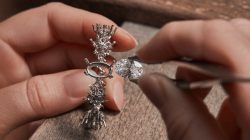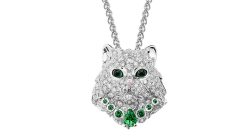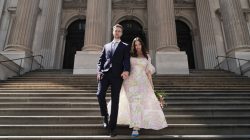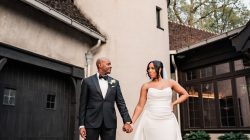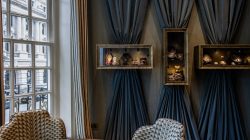No sooner, it seems, had Zac Posen whipped up a series of ball gowns for a TV miniseries than he was named to top creative positions at brands better known for cargo pants and pajama sets. On Monday Mr. Posen, 43, whose namesake brand ceased operations in 2019, was announced as the new creative director of Gap Inc. and the new chief creative officer of Old Navy.
The designer known for pieces that evoke Golden Age Hollywood will “serve as cultural curator and creative partner,” Richard Dickson, the president and chief executive of Gap Inc., said in a news release.
Mr. Posen’s appointment may seem a stretch — he surely won’t be making mermaid gowns — but this is not his first mass-market foray. He has created collections for Target and his own diffusion lines like Z Spoke. Nor is he the first star talent to be awarded a fancy title at Gap.
Predecessors have included Patrick Robinson, who after a four-year stint was dismissed in 2011 and, more controversially, Ye, the rapper formerly known as Kanye West, whose Yeezy Gap partnership ended amid a scandal in 2022. And yet, the company still seems willing to bank on a “name” to help burnish its image.
Maurizio Donadi, a former senior vice president at Levi’s and a founder of Transnomadica, a company that acquires and upcycles secondhand clothes, said Mr. Posen in his new positions can “bring a lot of new ideas, and a sophisticated level of taste in tune with where the market is going.”
Whether he can spin those ideas into a positive shopping experience remains to be seen. Mr. Donadi, an avid collector of Gap pieces from its glory years in the ’90s, said its stores these days are lacking in energy and imagination. “But I love the brand,” he said, “and I would love to see it relevant again.”
All Dolled Up
When Marc Jacobs sent a parade of doll-like models down his spring 2024 runway last Friday, he flicked at a fixation with certain toys that has been rippling through the fashion world and popular culture.
A week before, John Galliano showed his latest Maison Margiela couture collection on models with antique-doll makeup. And at the Grammys on Sunday, Billie Eilish performed the song she made for the “Barbie” film in a replica of the get-up of “Poodle Parade” Barbie, released in 1965. Maybe Margot Robbie rejected the look.
On its surface, this nostalgic and sometimes subversive aesthetic celebrates artifice, often by incorporating inflated lips, supersize lashes and glazed-doughnut complexions. But it can also express a brazen sendup of conventional femininity — or, more simply, a willful reversion to childhood.
“So many girls grew up wearing a tutu every day,” said Sharon Graubard, the founder and creative director of SG Files, a trend forecasting firm in New York. “This is like a grown-up interpretation.”
The look can be achieved with fairy-tale and filmy clothes or with highly structured pieces, as it was on Mr. Jacobs’s runway. His show, like some others, seemed a campy gesture meant to blur the distinction between models impersonating stiff-jointed playthings and those “playthings” performing as girls.
It’s clear the culture’s fascination with dolls has legs. With New York Fashion Week now underway and the European fashion weeks still to come, we’ll soon see how far they travel.
H&M Gets Thrifty
With stark white walls and a white floor, a new H&M store that just opened in Soho looks like nothing so much as an Apple store with clothes. Adding to this perception are oversize LED screens and smart mirrors in fitting rooms that allow shoppers to request products and to view styling options without leaving a room.
The mega retailer returned to the downtown Manhattan neighborhood two years after closing another Soho location in 2022. Linda Li, the head of customer and marketing for H&M Americas, said that the company had a, um, more culturally elevated aim for its new store: to create a gallery-like space in keeping with the area’s long-ago roots as a haven for artists and dealers.
The wares, as expected, are trend-driven — especially the secondhand clothes offered at a small in-store shop, H&M Pre-Loved, which is the first of its kind at an H&M in America.
“We are starting small,” Ms. Li said about the pre-loved concept. “But as we get to understand the customer reaction, we will go where it takes us.”
If You’re Going to Splurge …
At Nordstrom locations in New York and Los Angeles, new in-store pop-up shops offer customers a chance to discover what may be their next favorite brand. The pop-ups, on through February, were developed in partnership with the 15 Percent Pledge, an organization that encourages stores to devote a portion of their sales floors to Black-owned businesses.
They will showcase items from popular labels like Brother Vellies (whose founder, Aurora James, started the pledge in 2020), Wales Bonner and Off-White alongside a roster of emerging brands like Busayo, Aliette, The Oula Company, Sami Miro Vintage, Re Ona and Khiry, which makes Afrofuturist-inspired jewelry.
Sumber: www.nytimes.com

